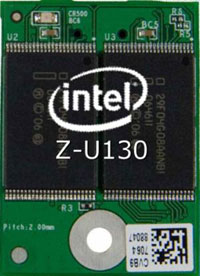Intel releases NAND flash "drives"


Intel's Z-drives are different than SanDisk's 32GB 1.8-inch SSD that I blogged about in January because Intel is using USB whereas SanDisk is using an Ultra ATA interface.
One promising feature of the new Intel flash drives is that they're being positioned as "value" drives aimed at delivering performance and lower costs. While SanDisk's 32GB Solid State Drive (SSD) could cost "around $600" when released in the first half of 2007, Intel's variant should be more cost-effective. According to Daily Tech:
Intel is positioning its solid state drives as a hard disk drive replacement technology for emerging market notebooks and low-cost, fully featured PCs and other embedded systems. Current price projections place Intel’s 4GB value SSD on par with 1.8-inch HDDs, but Intel expects costs to fall as it ramps up volume production. Intel predicts that its 4GB product will be priced below comparable 1.8-inch drives by the second half of this year, with it surpassing 2.5-inch drives by 2008. By 2009, Intel believes that its 8GB SSD will cost less than any comparable 1.8-inch or 2.5-inch HDD.
SSDs have several the advantages over fixed hard disk drives including faster boot times, embedded code storage, rapid data access and lower power requirements.
Solid state drives enjoy several advantages over traditional hard disk drives, such as faster start up, faster read times, lower seek times, less power consumption, silent operation and lower weight. Solid state drives should also be more reliable as there are no moving parts involved in the device’s operation. On the flip side, magnetic-based drives may endure better after a great number of read/write cycles and faster write times. For the foreseeable future, traditional hard disk drives will also enjoy the cost advantage at large capacities.
It's conceivable that a 4-8GB SSD like the Intel Z-drive could land in Apple's nanoBook by the end of 2007 or in January 2008. NanoBook in time for Macworld Expo '08? It could happen...